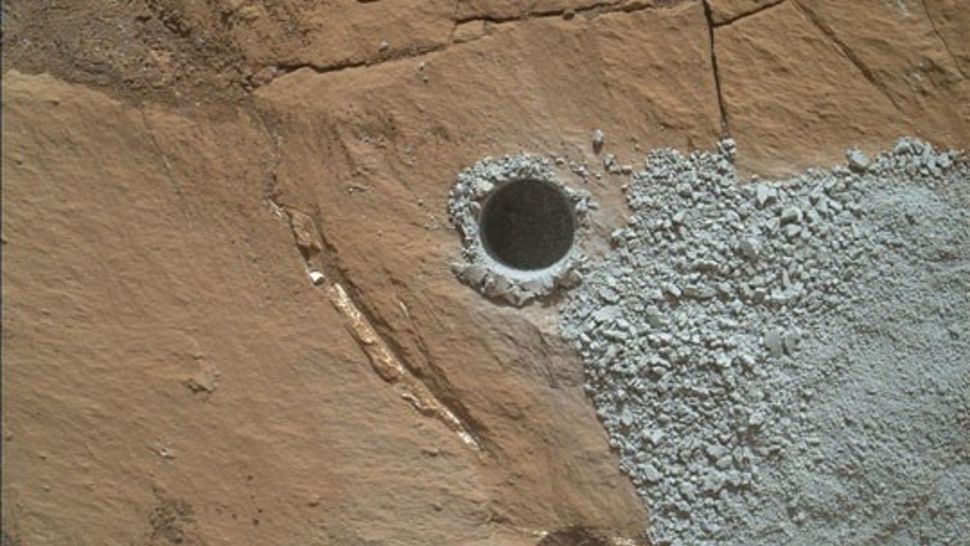Mysterious mineral on Mars was spat out by an explosive eruption 3 billion years ago
By Harry Baker published 2 days ago
NASA's Curiosity rover first uncovered the unusual mineral in 2015.

Silver-colored dust drilled from a rock by NASA's Curiosity rover on July 30, 2015. Analysis of the dust revealed it contained the mineral tridymite, which was very unexpected. (Image credit: NASA/JPL-Caltech/MSSS)
(opens in new tab)
A mysterious Martian mineral that has perplexed scientists since its discovery seven years ago may have been spat out during an unusual volcanic eruption, researchers have revealed. The mineral, which is normally only found on Earth, was likely formed on the Red Planet more than 3 billion years ago.
NASA's Curiosity rover discovered the mineral inside a rock at the heart of the 96-mile-wide (154 kilometers) Gale crater on July 30, 2015. The rover drilled a small hole into the rock and extracted a silver-colored dust sample. Curiosity's onboard X-ray diffraction laboratory analyzed the dust and detected tridymite — a rare type of quartz made entirely of silicon dioxide, or silica, that is formed by certain types of volcanic activity.
The unusual find was totally unexpected. "The discovery of tridymite in Gale crater is one of the most surprising observations that the Curiosity rover has made in 10 years of exploring Mars," study co-author Kirsten Siebach, a planetary scientist at Rice University in Houston and a mission specialist on NASA's Curiosity team, said in a statement(opens in new tab).
The discovery of tridymite stunned researchers for two main reasons, lead study author Valerie Payré, a planetary scientist at Northern Arizona University and Rice University, told Live Science in an email. First, Mars' volcanic activity was previously thought to be unsuitable for producing silica-rich minerals like tridymite. Second, scientists believe Gale crater was once an ancient lake, and it has no visible volcanoes nearby, which left scientists scratching their heads as they tried to figure out how the mineral ended up at the bottom of the lake, Payré said.
More:
https://www.livescience.com/mysterious-martian-mineral-origin
